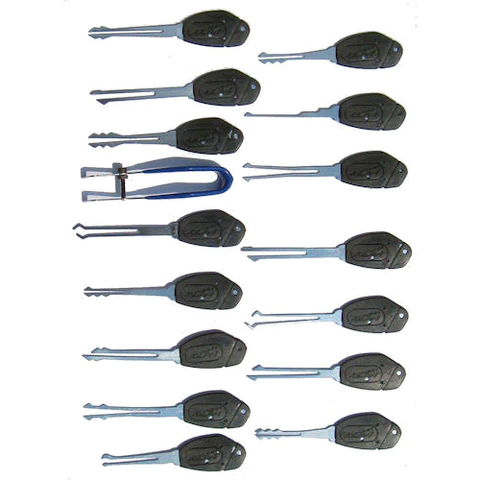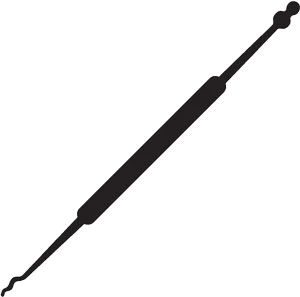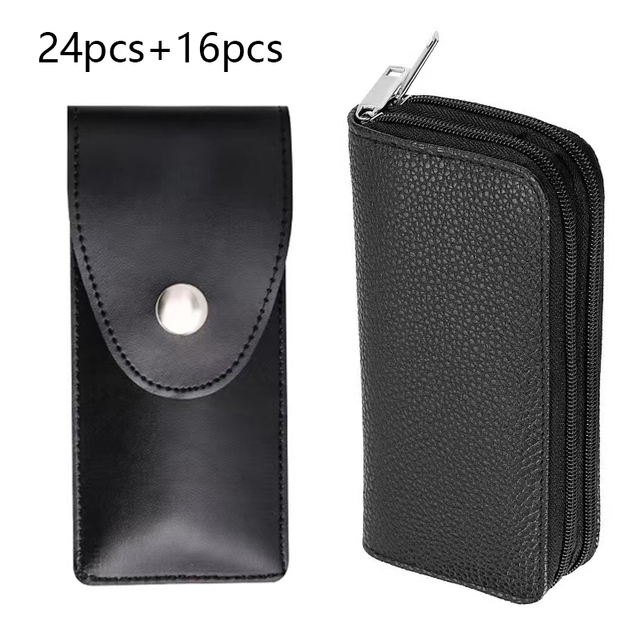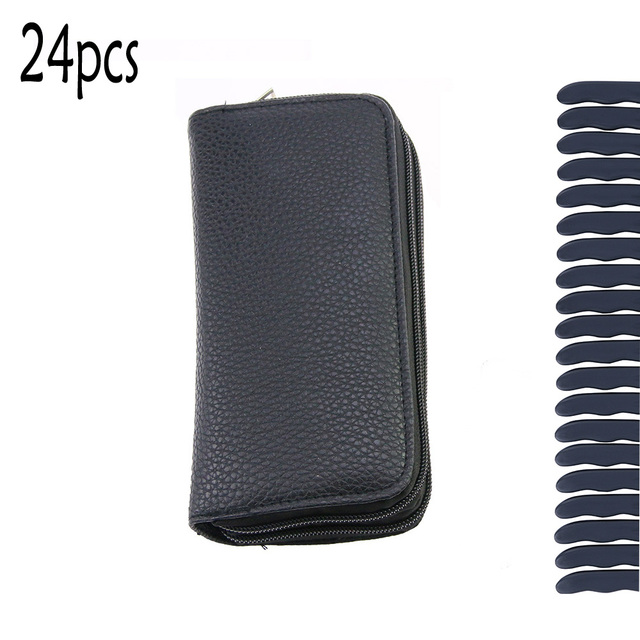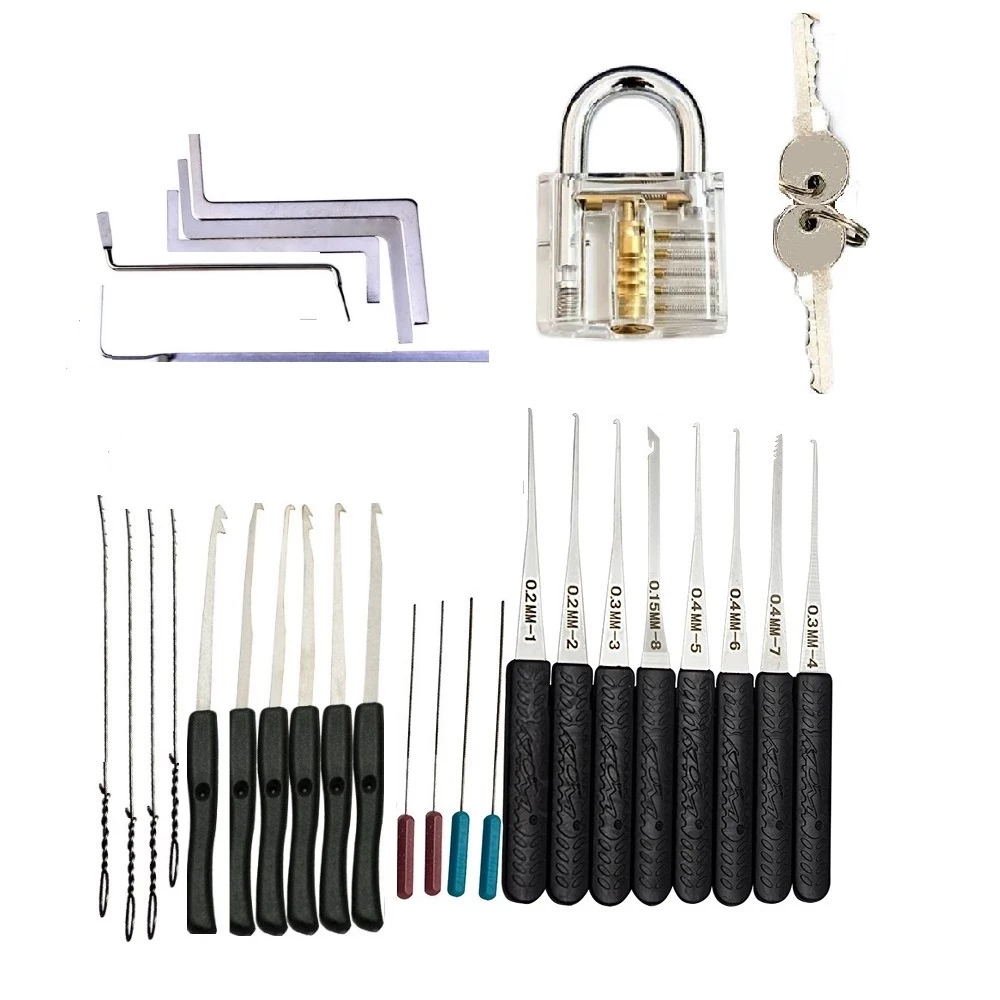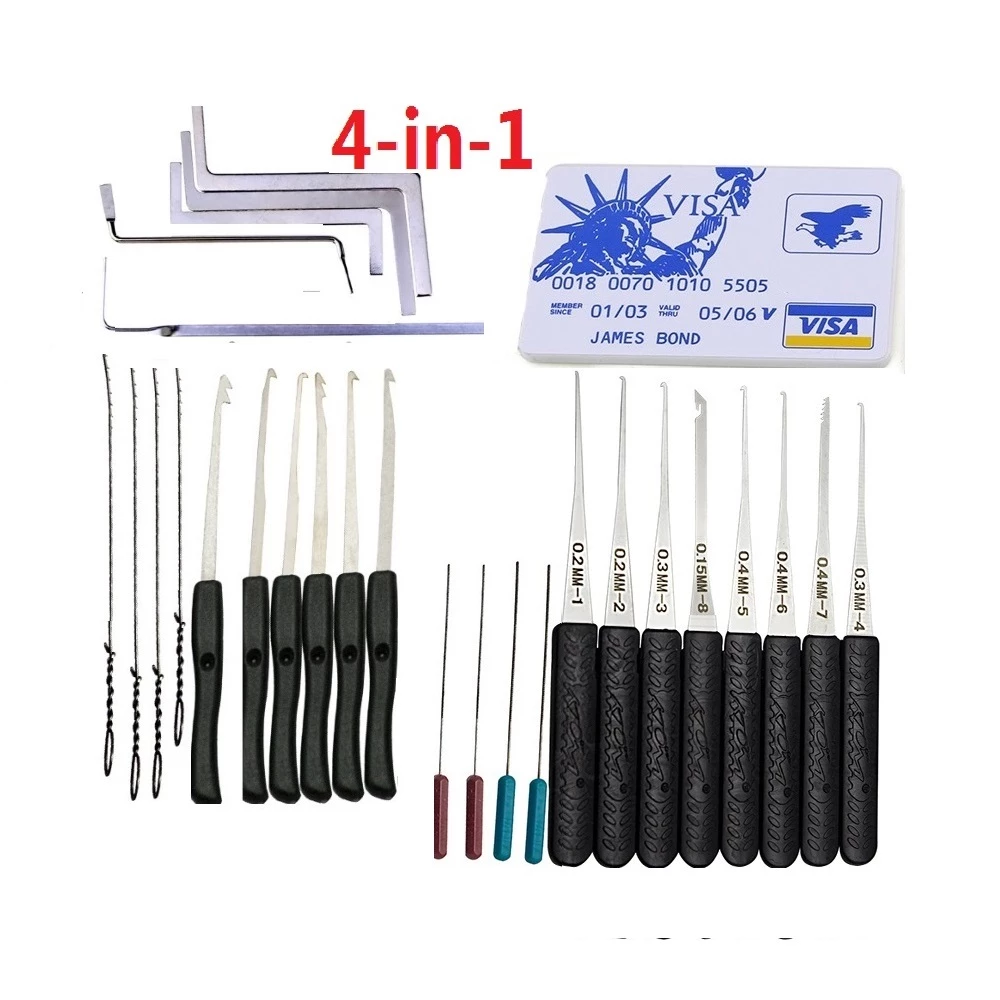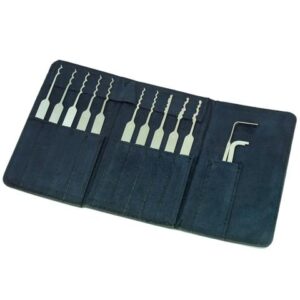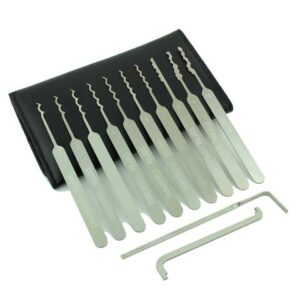When you start a new hobby, it is highly likely that you will buy a number of items that ultimately are seldom used.
This is certainly true of lock picking. One of the first purchases most beginners make is a cheap set of picks, often Chinese made.

I was no exception to this, although I had already decided I wanted a set of Bogota rakes too.

Such cheap kits are actually a useful step on your learning curve. These kits have a wide variety of designs. and give you a chance to experiment and discover what kind of picks and turning tools you like.
As I have gained better and more suitable collections of tools, that Chinese kit has seldom been used.
Like others, in my early days I also acquired a number of items that I have seldom, if ever, found an actual use for.
Lock Picking Legend recently posted a video on comb picks.
I won’t bother to explain how comb picks work, since the following two videos clearly explain this, as do many other videos and pages.
I have a set of comb picks. Comb picks top my list of lock picking gear I have never needed.
Even the perspex practice locks are immune to comb picking.
As Lock Picking Legend notes, unless you frequently encounter very old, low quality locks, your comb picks are going to sit unused. Comb pick sets often come with a high price tag, so save your money and put it towards some Bogotas, or one of my books.
If comb picks are one of the things I would not buy if I had my time again, what would I get?
I have talked about my Serenity Plus collection and the Polaris Rakes elsewhere.
Today, I am going to share a look at what I think of as my “EDC kit”. These are the items I am most likely to have with me if I encounter a lock that requires opening.
As part of my usual duties I sometimes encounter items that have been locked that should not be, or more commonly, locks for which the key has been misplaced.
I do this, however, with caution. Some colleagues are likely to shift the blame for the lock not opening to myself.
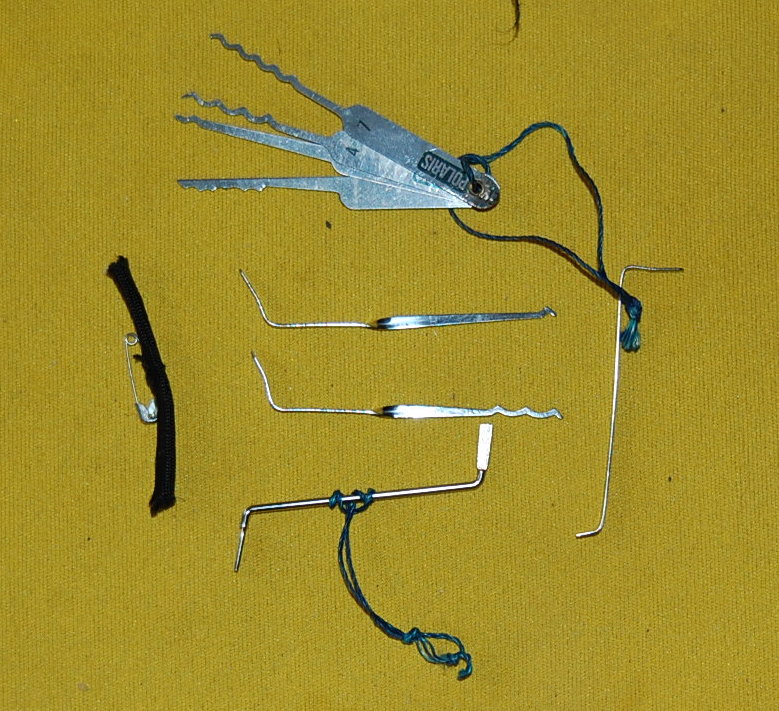
Central to my EDC collection are a pair of Bogota Rakes, shown beside their home-made carrying sleeve (far left). This latter item may be pinned to clothing if I want to keep the picks handy.
The set consists of a single hump Bogota and a triple hump, both with handles designed to also function as turning tools. I recommend you get the “euro-twist” versions so the handles point away from each other when you use both to open a lock.
The handles of these Bogotas have been “bowed” so they can be used as turning tools in a wider variety of keyway widths.
Sometime in their history, the handles got bent at ninety degrees and shortened from about 27mm to 15mm. I have been able to bend them back to close to the original angle of 60 degrees. In hindsight, I should have left them alone, since a longer 60 degree turning tool might be handy for recessed locks and tulip knobs.
Most locks I have been called upon to open in real life have succumbed to raking using the Bogotas.
Often the key (pun intended) to picking a lock is how you apply the turning tool. My kit therefore includes a couple of turning tools in addition to the Bogota handles.
This article suggests creating a tapered thickness turning tool of 0.7 to 1.5mm thickness. I do not currently have the materials for this, being mainly limited to wiper blade inserts of about 0.4mm thickness.
That said, the turning tool I have used most is the one on the far right of the photo, which was made from wiper-blade insert. It has proved to be both useful and versatile.
The longer (13 to 14mm) nose is bent at ninety degrees to the shank and slightly bowed. The corners have been rounded off. It is approximately 2.7mm wide. With the ends bent, it is a little over 60mm long.

Since I tend to favour raking, I tend to primarily use bottom of the keyway (BOK) applied turning tools.
The shorter (6 to 6.4mm) end is also rounded off. The width has also been reduced to just under 2mm, the shank starting to be reduced just before the bend.
This shorter hook may be used as a TOK turning tool or a BOK for small padlocks.
I should probably add a SERE pin to this kit, since it may also be used as a turning tool for very small locks. I have a SERE pin elsewhere in my EDC, but another in this kit would be handy
The other turning tool at the bottom of the main photo is taken from a cheap Chinese set, and is a round 1.5mm section rod with flattened 2.9 to 3mm ends, 0.7mm thick. This is a handy tool for wider keyways.
The Bogota rake is usually the first tool I reach for when attempting to pick a lock. In most cases so far, this has been all that is needed.
Many of the locks I have encountered that have resisted the Bogota have opened with a snake pick. Not surprisingly, I like to have a snake pick in my kits, and my EDC kit is no exception.
This particular snake pick was taken from a “James Bond Credit Card” set. These kits also include a city rake. When they work, city rakes work very fast, so I decided to include the city rake too.
As I have noted elsewhere, the credit card kits vary a lot in quality. The first I brought was very nice, while the second had much thicker picks, with a poorer finish. Some grinding, filing and sanding made them more useful.
Drilling a hole in them, however, proved surprisingly problematic. Turned out these “poor quality” picks were made from very tough steel! It took at least an hour using a low-rpm carbide bit and oil.
Having read Christine Holler’s lock pick recommendations in this article, I wanted to add a cycloid and sinusoid rake to my kit. Luckily, UKBumpkeys has started selling individual Polaris rakes. I decided on the No.4, four-hump cycloid, and the No.7, five-hump sinusoid.
I shortened the handles so the tools were all about 75mm long.
I then went about adding a hole. I had little doubt the Polaris are made from high quality material. Given the trouble I had had drilling the snake and city rake, I tried a different approach.
Since these picks had thinner handles, I was able to hole them using a punch and hammer. These holes were then enlarged using the conical grinding stone of a Dremel Tool. This took a fraction of the time that drilling the others had taken!
My local hardware store had no idea what a tubular rivet was. Fortunately, I remembered some brass tubing I had. I cut a short length and a few minutes work with a ball-peen hammer rivetted the four picks together.
Lock picking requires a light touch, so it is not unusual to drop tools when working in the field. To counter this I have added cord loops to a couple of tools.
The two turning tools are supposed to be joined, but the wiper blade tool usually works itself loose. I have left them apart since it makes a clearer photo.
